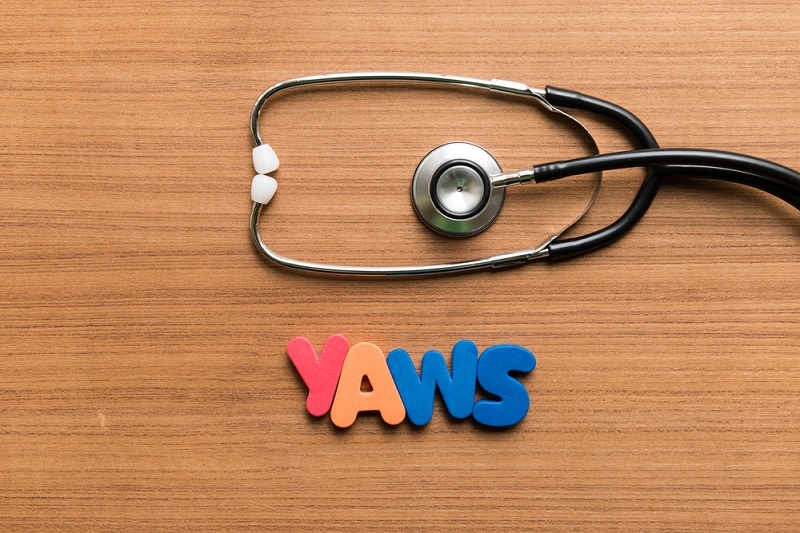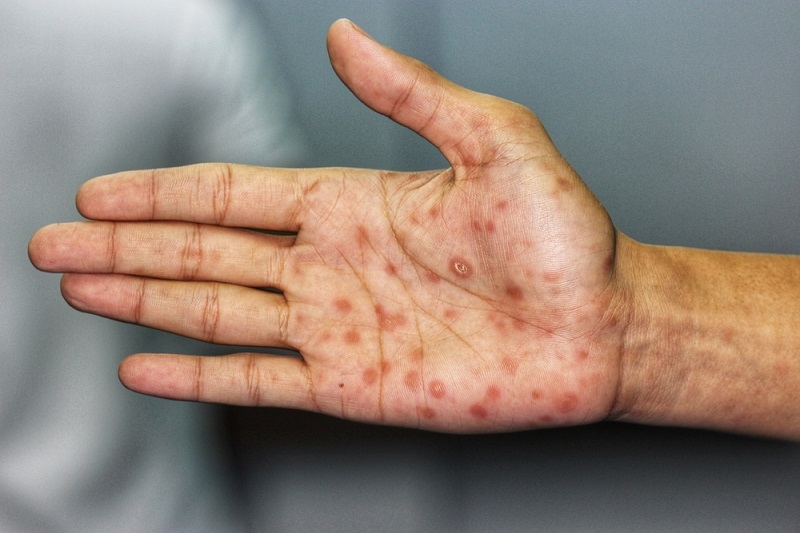Yaws Disease: Symptoms, Causes, Treatment, and Prevention

Yaws disease is a long-term bacterial infection that primarily affects the skin, bones, and joints. Caused by Treponema pallidum pertenue, a close relative of the germ behind syphilis, this infection is not sexually transmitted. It spreads through direct skin-to-skin contact, often when children play in warm, humid tropical regions. Yaws disease mainly impacts children under 15, especially those living in rural, low-income areas. Because humans are the only carriers, it is one of the few diseases that could potentially be eradicated if proper treatment and preventive measures are implemented.
What is Yaws Disease
Yaws is a chronic infection affecting the skin, bones, and joints because of the Treponema pallidum pertenue, a germ closely related to the one that leads to syphilis; however, unlike syphilis, yaws is not transmitted sexually. The infection passes when there is direct skin contact, abrasion, or scratch on someone who touches the body fluid emanating from the open sore of an infected person. Yaws occurs mainly in children below 15 years of age from rural tropical regions where hygiene standards are low and medical care is limited. Because man is its only carrier, yaws is seen as a potential candidate for global eradication if treated in a controlled and effective manner.
Yaws Symptoms and Yaws Causes

Yaws Causes
- Yaws is caused by the bacterium Treponema pallidum pertenue.
- The bacteria survive in fluid from open sores or ulcers of an infected person.
- Transmission occurs when someone with a wound, cut, or abrasion comes into contact with this fluid.
- Poor hygiene, overcrowding, and limited access to medical care make spreading yaws disease easier.
Yaws Symptoms
Primary Yaws:
- It starts with a single bump or sore where the bacteria enters the skin.
- Called “mother yaw,” it looks like a raspberry or raw sore.
- Highly contagious but usually not painful.
- The lesion may crust over and dry, but the disease is not cured.
Secondary Yaws:
- Infection spreads across the body.
- Multiple sores and bumps appear, often in moist areas like the armpits or groin.
- Painful cracks can develop on the hands or feet, making walking difficult.
- Some children may experience fever, bone pain, or joint swelling.
Latent Stage:
- Disease may remain silent but contagious for years without symptoms.
Tertiary (Destructive) Stage:
- In a small group, yaws disease can reappear in a destructive form.
- It can damage bones, joints, the nose, and the face.
- Damage at this stage is irreversible.
Early recognition of yaws symptoms is crucial to prevent permanent damage.
Must Read: Understanding Hay Fever: Triggers, Signs, and Relief
Diagnosis and Tests
In most areas where yaws persists, a doctor or a health worker relies on observation of the ulcers and the patient's history. When a child in a tropical rural area presents with what could be said to be classical yaws symptoms, the level of suspicion is high.
To confirm, there are serological tests somewhat akin to those for syphilis. They can tell if a treponemal infection is present, though not always if it is specifically yaws. Some newer rapid tests give some differentiation, and in reference laboratories, PCR tests can truly identify the precise bacterium.
But mostly, in many remote areas, these sophisticated tests aren't available. In those places, health workers generally treat based on signs and community history rather than waiting for laboratory confirmation.
Management and Treatment
Treatment Options for Yaws
Good news: the treatment for yaws is straightforward and very effective. A single dose of an antibiotic is enough to cure the disease. In contemporary times, azithromycin is taken by mouth. Easy to administer, safe for children, and requires no injection, this single dose is sufficient for most patients in killing the infecting bacteria and initiating the healing of the sores within weeks.
If azithromycin is not usable — in case azithromycin resistance were to develop in the bacteria, or the patient cannot take it — penicillin acts as the major alternative. The long-acting penicillin, administered through a single injection, remains efficacious as it was several decades ago. Other antibiotic options are available, but they require treatment for multiple days and thus prove impractical for large community campaigns.
Also Read: Causes, Risks, and Prevention Guide for Psoriatic Arthritis
Checking Back After Treatment for Yaws
Four weeks after treatment, health workers usually check the patients. The sores should be either completely healed or well on their way to healing. Sometimes blood tests are conducted to confirm that the infection is truly gone, but most rural programs rely on visible healing as the main sign.
One important thing about yaws treatment is it does not end with the patient. A family or even the entire village might need treatment together. Otherwise, untreated people keep spreading the infection back and forth.
Prevention
There is no vaccine as of this time, so all preventive measures focus on stopping the spread of the disease. That means case identification is of utmost importance, as well as treating those who come into contact with them and, in some instances, implementing mass treatment campaigns. In the 1950s, mass treatment with penicillin led almost an almost successful elimination of yaws in the world. More recently, mass treatment campaigns with azithromycin have given cause to hope again. Simple measures also go a long way toward the control of this disease. Improving hygiene, water quality, and reducing household crowding all lessen the risk of transmission. Teaching families to cover up sores and avoid skin contact with active lesions would help greatly.
With no animal reservoir for this yaws disease, global health leaders believe it to be a way to achieve eradication. But this requires very high community coverage during treatment rounds, coupled with continual surveillance and a very rapid response whenever new cases emerge.
Don’t Miss: Learn All The Norovirus Symptoms, Prevention, and Treatment
Final thoughts
Once you peel back the layers, what is the yaws? First and foremost, it is a childhood infection, beginning on the skin but later capable of destroying bones and rendering permanent scars when left untreated. The causative agents of yaws are basically pathogens passed on through skin contact. The symptoms of yaws are easy to recognize if one knows them: a raspberry-like sore, later on, multiple lesions, and in certain cases, some sort of bone pain or deformity. The best part is that yaws treatment is straightforward: one antibiotic dose can cure it.
The challenge is not medical but social — reaching remote villages, treating everyone at once, and keeping up prevention. If those barriers are overcome, yaws disease could become one of the next human diseases to disappear completely.
This content was created by AI
